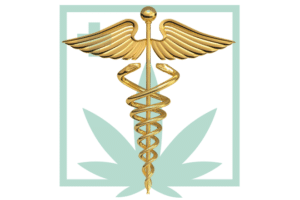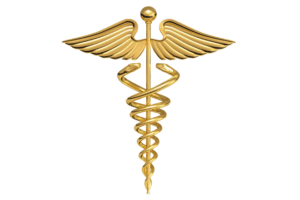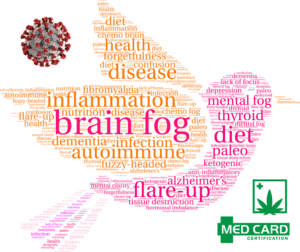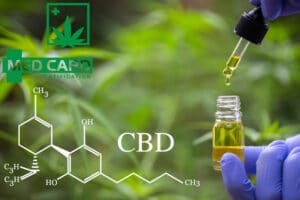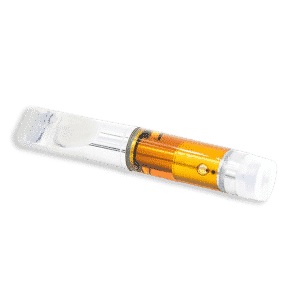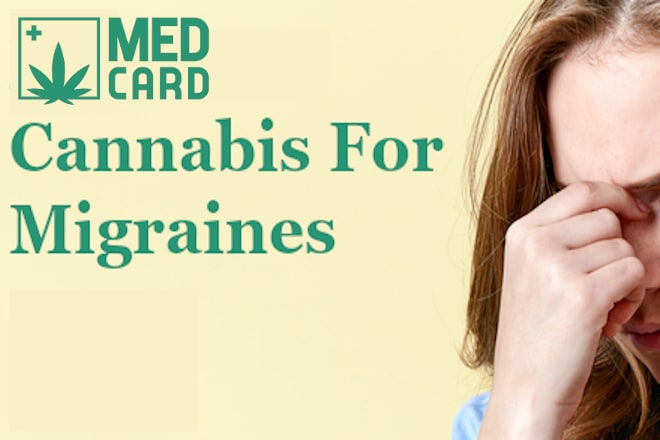
How Medical Marijuana Helps Treat Migraines and Headaches
- Countless patients are using medical marijuana to treat headaches and migraines.
- There is evidence that marijuana offers a safe and effective method to relieve pain.
- Compounds found in marijuana called cannabinoids help raise levels of our own natural pain-killing compounds.
- There are several ways to use medical marijuana to treat headaches.
For thousands of years, people have been using medical marijuana to treat headaches and migraines. Is there scientific evidence that medical marijuana is safe and effective at relieving headaches? How does marijuana relieve pain? Let’s take a look.
Headaches
Headaches don’t discern when choosing their victims. They can plague anyone of any age at any time in any location. Headaches can come out of nowhere. Their trigger is often a mystery. And sadly, many individuals suffer frequent bouts of headaches with no relief in sight.
Traditional prescription or over-the-counter medications can be effective in dulling the relentless pain. However, pharmaceutical drugs often come with harmful side effects such as nausea, ulcers, constipation, fatigue, and dizziness. Additionally, some prescription pain medications are highly addictive.
Can medical cannabis safely provide the needed relief for many headache sufferers as many claim? Actually, the anecdotal evidence supporting this claim is overwhelming.
In the past few decades research has helped us understand exactly why and how this herb reduces pain, blurred vision, nausea, dizziness, and other symptoms stemming from headaches and migraines. Science is now backing those anecdotal claims based on years of clinical trials and studies.
Let’s get into some relevant data on the subject.
Studies on medical marijuana for treating migraines
The efficacy and safety of medical marijuana for the relief of headaches and migraines have been thoroughly examined in numerous surveys and studies over the last twenty years. In all cases, marijuana has proven to be not only effective for some patients, but also quite safe and well-tolerated as cannabis is non-toxic and non-addictive.
In 2001, after years of studying modern research papers and ancient historical documents detailing the successful administration of cannabis for headache relief, Dr. Ethan Russo concluded: “Based on the above review, it is convincingly the case that ‘medical marijuana deserves formal scientific scrutiny for headache and migraine treatment.”
That was just the beginning.
The National Academies of Sciences, Engineering, and Medicine made a similar statement fifteen years later, reporting that there was “conclusive or substantial evidence that cannabis or cannabinoids are effective for the treatment of headaches and migraines.”
Here are the results of several studies on medical marijuana and headache pain. Links to these reports can be found at the end of the article.
- The University of Colorado conducted a study in 2016, in which 121 headache and migraine sufferers were administered cannabis to treat their symptoms. More than 85 percent of the participants claimed that their symptoms were significantly reduced from 10.4 to 4.6 episodes per month.
- In 2019, The American Academy of Neurology conducted a study that was published in the Journal of Neurology.
- In a 2019 study by the American Academy of Neurology, published in the journal Neurology, 316 participants were given a 20:1 blend of THC and CBD. Almost 90 percent of the patients experienced relief from their symptoms, and another 40 percent reported a lessening of monthly headaches per month. Additionally, other subjects claimed to experience reduced anxiety, better overall moods, and healthier sleep patterns.
- The Journal of Pain published the findings of a 2019 study reporting that individuals using medical cannabis for headache relief claimed to experience a 50 percent reduction in both headache and migraine severity.
- The Journal of Integrative Medicine published the findings of a July 2020 study and subsequently reported that 94 percent of headache and migraine sufferers experienced pain relief within two hours of smoking cannabis.
- Two months later, in Sept. 2020 in a survey outlined by Pain News Network, nearly 10,000 participants in Canada and the U.S. utilized a tracking app called Migraine Buddy. The outcome of the survey indicated that 82 percent of the survey’s participants experienced relief from their headaches after using medical cannabis.
- Another study involved 127 participants. The patients were administered a treatment including cannabis to treat their chronic cluster headaches and migraines. Ultimately, the results of the study determined that cannabis had the same efficacy for pain reduction as prescription headache medications. The patients also claimed that the cannabis offered relief with fewer side effects generally associated with prescription medications such as colitis, stomach aches, and muscle pain.
- In 2017, researchers studied the effects of cannabis on 26 patients who were prone to experiencing headaches after the administration of medication. The participants were given CBD in tandem with ibuprofen of nabilone for a two-month period, with two months in between sessions. At the conclusion of the trial, the patients reported improvements in health as well as a better quality of life when administered pharmaceutical meds in conjunction with cannabis.
- In 2015, a medical cannabis company polled 621 headache sufferers who were given cannabis for more than 30 days over a six-month period. The results of the poll determined that 100% of the participants indicated a lessening of pain and discomfort.
- According to studies, cannabis may be more effective than prescription medications for headache reduction, and without the negative side effects, even at high doses.
does medical marijuana help treat headaches?
The chemical neurotransmitter, serotonin is responsible for appetite, memory, mood, social behavior, sleep, and many other functions. There is a widely-held belief in the medical field that low serotonin levels may make patients more prone to inflammation, which in turn can lead to chronic headaches. Many health professionals have concluded that cannabis has a significant effect on serotonin levels.
Headaches and migraines may also be the result of a deficient endocannabinoid system (ECS). Anandamide is an endocannabinoid compound created by our own bodies. It is associated with both pain regulation and serotonin production. When anandamide levels are heightened, pain levels are reduced.
Research has shown that medical cannabis effectively mimics the effects of endocannabinoids such as anandamide. The application of cannabis raises anandamide production and reduces inflammation, consequently lessening the frequency and duration of headaches.
This is How medical marijuana is used to treat headaches
Various delivery methods offer varied onset time and bioavailability.
Here’s a quick rundown on delivery methods:
The effects of smoking and vaping medical marijuana can be felt almost immediately. However, patients will notice the full effect on pain usually within 15-45 minutes. The effect may last up to four hours. Smoking and vaping also offer the highest bioavailability.
Smokers have their choice of a myriad of cannabis strains. Each strain contains varying levels of phytocannabinoids (cannabinoids produced in plants) such as THC, CBD, CBG, CBN, CBC, and others.
Each strain also has its own terpene profile. Terpenes are the medicinal aromatic oils that give cannabis strains their distinctive aroma. The combined effect of the cannabinoids and terpenes is referred to as the entourage effect. Some experimentation may be needed to find the ideal combination of cannabinoids and terpenes for a particular patient.
However, smoking and vaping are not recommended for patients with respiratory issues, circulatory issues, or high blood pressure. Moreover, precise dosing is difficult with smoking and vaping, as every strain contains different concentrations of cannabinoids.
Cannabis concentrates can be smoked, used in a vape pen, or vaporized using a device called a dab rig. There are several types of cannabis concentrates including wax, crumble, shatter, budder, rosin, hash, hash oil, kief, and others. Hash oil can be purchased in convenient, easy-to-use plastic measuring syringes for accurate dosing.
Cannabis tinctures are liquids that can be applied under the tongue. The effects take 10 to 15 minutes, peaking within three hours and lasting up to six hours. Tinctures products don’t have the high bioavailability of smoked or vaped cannabis, however, dosing with tinctures is more precise.
Cannabis oil capsules may take up to half an hour before the effects kick in, as they first must melt in the stomach. Capsules generally take up to four hours to fully take effect, but the effects are long-lasting — up to 12 hours, depending on the potency and type of capsule. Dosing with capsules is highly accurate, but the bioavailability is low.
Medical marijuana edibles (brownies, cookies, candies, gummies) are a delicious way to treat a headache. However, keep in mind that ingredients such as sugar and chocolate actually trigger headaches in some patients.
Learn how to make your own edibles
Edibles usually take 30 minutes to an hour to begin to take effect. Assuming the product label is accurate, edibles offer another precise dosing method but with low bioavailability.
Additionally, there are other handy delivery methods for headache relief such as topicals, suppositories, inhalers, and transdermal patches.
Patients may want to consult with knowledgeable medical marijuana doctors or a budtender at their local medical marijuana dispensaries to determine which strains or delivery methods would be ideal for their condition.
Several states require patients to obtain a medical marijuana card in order to purchase cannabis. However, not all states that offer medical marijuana cards include headaches as a qualifying medical condition. In several states, marijuana is legal for all adults 21 and older. Furthermore, anyone can buy CBD online without a medical marijuana card as long as it is derived from hemp.

Sign Up for Medical Cannabis Today!
For potential patients, if you’re ready, we make it easy to connect with a medical marijuana doctor nearby or online. If you are interested in getting certified, please fill out the MMJ patient registration form below and press submit to get started. See if you qualify today!

MedCard Registration Form

Helpful Medical Marijuana Links:
Sources and additional reading
- (PDF) Hemp for Headache: An In-Depth Historical and Scientific Review of Cannabis in Migraine Treatment
- Effects of Medical Marijuana on Migraine Headache Frequency in an Adult Population
- Medical Cannabis for Chronic Migraine: A Retrospective Review (P3.10-015)
- Short- and Long-Term Effects of Cannabis on Headache and Migraine
- Study: Migraine Patients Report Symptom Relief Following Herbal Cannabis Inhalation
- Study Finds Cannabis Effective for 82% of Migraine Patients
- (PDF) Hemp for Headache: An In-Depth Historical and Scientific Review of Cannabis in Migraine Treatment




